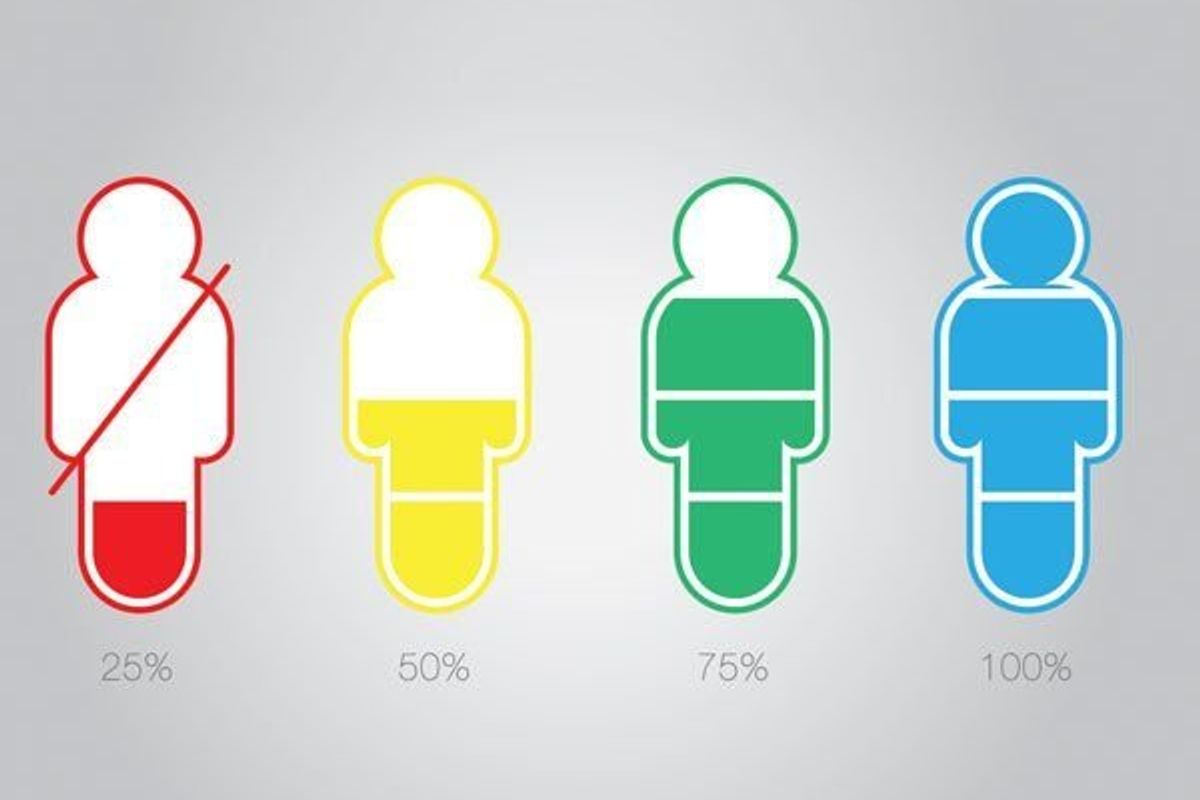By Linda Tannenbaum, Open Medicine Foundation
A February Institute of Medicine report said up to 91 percent of people with chronic fatigue syndrome have not been diagnosed. These people are not receiving appropriate treatments or health care advice. If you feel tired often, how would you know if you have this disease?
ME/CFS, myalgic encephalomyelitis, also known as "chronic fatigue syndrome" or ME/CFS or a proposed new label, "systemic exertion intolerance disease," includes debilitating fatigue that is constant or recurring. This is not tired because you've had a long day. It's fatigue like you have the flu or like you are on chemotherapy. Some patients describe this as feeling like they have lead in their body or that they have no energy, like a dead battery.
But it has other symptoms, such as waking up feeling drained or like you have a hangover. Most of these patients take more time to transition from sleeping to awake activity. They may have insomnia or require more than eight hours of sleep, yet still not feel fresh in the mornings. ME/CFS also includes trouble with thinking abilities. This could include processing new information quickly (such as when given driving directions or asked to remember a phone number), doing math in your head or multitasking. Forgetting words or getting your "wires crossed" is commonly reported.
Another symptom, orthostatic intolerance, may make a person uncomfortable standing in one place long. The patient feels a strong urge to lie down or they may feel dizzy. Often patients unconsciously compensate by folding their legs when they sit down or shifting their weight from one leg to another when they stand, or avoiding lines, doing dishes at a sink or brushing their teeth at a sink. Other symptoms some patients experience include muscle pain, sore throats, swollen lymph nodes, sound and light sensitivity, headaches, easy bruising and vertigo. In all, about 60 different symptoms can occur with the disease, and each patient's symptom profile may be different. [1]
One symptom or timing of symptoms has been described as the distinguishing hallmark of the disease. Referred to as "post-exertional malaise," ME/CFS patients with mild or moderate cases may have brief periods without noticeable fatigue or other symptoms. But it doesn't last long. Then within hours or days of the activity, the patient experiences a "crash" of feeling sick, so sick they can't function. [2] It may last hours, days or weeks. Depending on how bad the episode is, the "crash" symptoms may include hoarse voice, debilitating fatigue, mental fog, headache, hot and cold flashes, nausea and vomiting. In these cases, some patients find they can start off at work feeling pretty good on Monday because they rested over the weekend. Then they find that by Tuesday afternoon or Wednesday, they are struggling to finish the work day. In addition to mental or physical activity, other triggers for a "crash" include infections, surgery, an accident or stress.
Severe cases, about 25 percent of the estimated 1 million Americans with the disease, struggle to take care of their daily needs, such as changing clothes and preparing a meal. [3] And some of those are totally bed-bound and too weak to feed themselves or even talk.
If you suspect you have this disease, you will want to rule out another illness that has a similar presentation, such as fibromyalgia, hypothyroidism, cardiac dysfunctions, an infection or depression. Of course, it is possible a person could have one of these other conditions and also have ME/CFS. Women ages 35 to 50 are at a higher risk of coming down with this disease. The second most common group to develop it includes boys and girls in their adolescence (ages 11 to 23). However, it can strike anyone, including men and young children.
The Open Medicine Foundation is focusing on funding research that will put an end to this disease and bring back vitality to the many women now suffering, benefitting them, their families and society.
References:
- Berne K. Author of 1995 book: Running on Empty, The Complete Guide to Chronic Fatigue Syndrome (CFIDS), pp57-60, https://wwcoco.com/cfids/bernesx.html.
- Black CD, McCully KK. "Time course of exercise induced alterations in daily activity in chronic fatigue syndrome," Dyn Med. 2005; 4:10. Published online 2005 Oct 28. doi: 10.1186/1476-5918-4-10, https://www.ncbi.nlm.nih.gov/pmc/articles/PMC1280928/.
- Brown A, Evans M, Jones N, Jason LA. "Examining the Energy Envelope and Associated Symptom Patterns in ME/CFS: Does Coping Matter?" Chronic Illn. Published in final edited form as: Chronic Illn. 2013 Dec; 9(4): 302-311. Published online 2013 Apr 12. doi: 10.1177/1742395313478220 PMCID: PMC3893101, NIHMSID: NIHMS544489, https://www.ncbi.nlm.nih.gov/pmc/articles/PMC3893101/.
- Pheby D, Saffron L. "Risk Factors for Severe ME/CFS," Biology and Medicine, Oct.-Dec. 2009; 1(4): 50-74. https://www.prohealth.com/library/showarticle.cfm?libid=15073.
Follow Society for Women's Health Research on Twitter: www.twitter.com/SWHR







